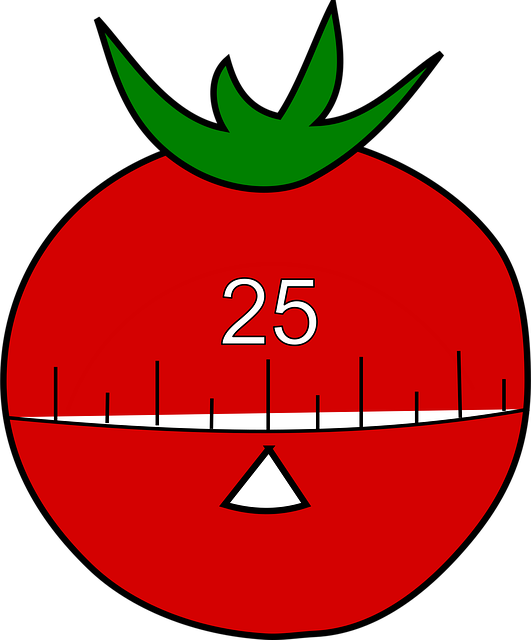We live in a world full of distractions — social media pings, endless emails, and that YouTube “just one more video” temptation. Staying productive isn’t easy. But what if I told you that working in short, focused bursts could dramatically improve your efficiency?
That’s exactly what the Pomodoro Technique does — a simple yet powerful time-management method that helps you focus deeply, avoid burnout, and get more done in less time. Let’s explore how it works, why it’s effective, and how you can use it to boost your productivity starting today.

What Is the Pomodoro Technique?
The Pomodoro Technique was created in the late 1980s by Francesco Cirillo. As a university student, Cirillo struggled to concentrate, so he set a tomato-shaped kitchen timer for 25 minutes and promised himself to focus until it rang.
In Italian, “Pomodoro” means tomato — and that’s how this method got its name.
The core idea is simple:
- Work for 25 minutes without distractions.
- Take a 5-minute break to rest your brain.
- After 4 cycles, take a longer break of 15–30 minutes.
It may sound almost too simple, but this structured approach helps train your brain to work with time, not against it.
Why 25 Minutes Works Like Magic
Research in neuroscience supports the idea of working in focused intervals. Studies show that the average person’s attention starts to decline after 20–30 minutes of continuous concentration. By taking short breaks, you reset your brain, preventing mental fatigue.

Fact: A University of Illinois study found that brief breaks improve focus by up to 40% compared to working without pauses.
Figure: A 2023 survey by DeskTime reported that employees using structured breaks (like Pomodoro) had 13–15% higher productivity than those who worked non-stop.
The Pomodoro Technique also tackles procrastination. Knowing you only need to commit for 25 minutes makes starting much less intimidating — which is often the hardest part.
How to Use the Pomodoro Technique (Step-by-Step)
Here’s how you can put it into action immediately:
- Pick a task — writing an article, answering emails, studying.
- Set a timer for 25 minutes (use a phone app, desktop tool, or physical timer).
- Work with full focus — no notifications, no multitasking.
- Take a 5-minute break — stretch, grab water, or walk around.
- Repeat 4 Pomodoros, then take a longer 15–30 minute break.
Apps like Focus Booster, Tomato Timer, and Forest make it even easier to track your sessions.
Real-Life Results You Can Expect
When practiced consistently, the Pomodoro Technique can lead to:
- More tasks completed in less time.
- Less mental fatigue because of regular breaks.
- Better time awareness — you know exactly how long tasks take.
- Higher motivation — ticking off each Pomodoro feels like a small win.
For example, a marketing team at a mid-size company used the Pomodoro Technique during a 3-month campaign. They reported a 20% faster project completion rate and lower overtime hours.

Also Read : Multitasking vs Single-Tasking – Which Boosts Productivity More?
Common Mistakes to Avoid
While the method is simple, some people fall into traps:
Skipping breaks — this reduces its effectiveness.
Over-timing tasks — stick to 25 minutes, even if “you’re in the flow”.
Not planning ahead — use a to-do list so you don’t waste Pomodoro time deciding what to do.
Advanced Tips to Master the Pomodoro Technique
Once you’ve tried the basic Pomodoro cycle, you can start customizing it to match your work style. For example, if you’re working on creative projects like writing or design, you might find that 25 minutes isn’t enough to get into deep flow. In such cases, you can extend your focus time to 40 or even 50 minutes, but always keep the break structure intact. The key is not to overwork your brain — the break is where your mind processes ideas and solutions in the background.
Another advanced approach is task batching. Instead of jumping between unrelated tasks in each Pomodoro, group similar activities together. For instance, dedicate one Pomodoro to replying to all emails, another to research, and another to content creation. This minimizes context-switching, which can reduce productivity by up to 40% according to the American Psychological Association.
Also Read : The First 60 Minutes Rule – How to Start Your Day Like High Achievers
If distractions are your biggest challenge, combine the Pomodoro Technique with tools like website blockers or focus music playlists. The structured nature of Pomodoro makes it perfect for pairing with digital discipline methods, helping you create a distraction-free environment.
Remember, the power of Pomodoro lies in consistency. Doing it once won’t change your productivity overnight, but practicing it daily for a few weeks can rewire your work habits, making focused effort your default mode. Over time, those small 25-minute wins compound into major achievements.
conclusion
The Pomodoro Technique is more than a timer trick — it’s a mindset shift. By working with your brain’s natural focus cycles, you can avoid burnout, get more done, and even enjoy the process.
Start small: just one Pomodoro today. You might be surprised how much you achieve in 25 minutes.
